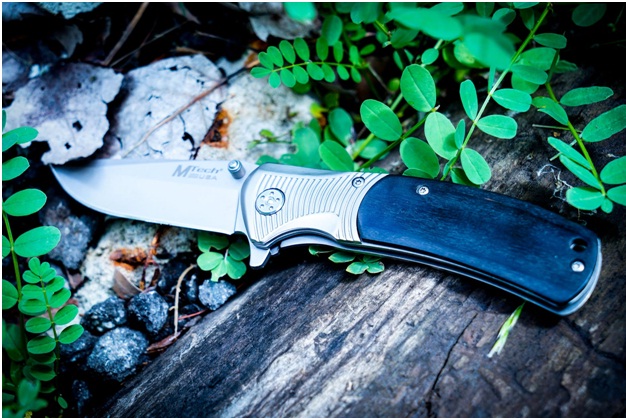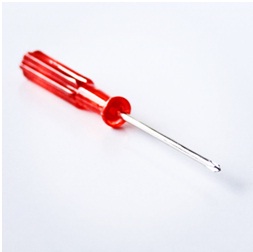How to Care for Your Pocket Knife
24th Mar 2021

Your pocket knife takes care of you. It’s the first thing you reach for when you need to open an envelope or break down a box. Slicing up an apple? In need of a tool for cutting rope or one that has a bottle opener? Your EDC knife is your best friend. Need to wedge out a splinter? Carve up some feather sticks? Strike a fire from a ferro rod?
The ways in which you may use your pocket knife are innumerable. As man’s most versatile tool of all time, your uses for your favorite knife are limited only by your problem solving ability. To recap, it takes care of you. You should take care of it.
Follow this quick guide covering some common problems faced by knife owners and how to address them. Most common issues will find a remedy here, but if you need more pointers or are facing a unique issue, contact us at WhiteMountainKnives@gmail.com for additional help.
1.Keeping it sharp
For most casual owners and users of pocket knives, a dull blade is the most frequently encountered problem. With time and use, even the hardest steels, including modern crucible particle metallurgy steels, will wear down and become dull. Knowing how to return the blade to a razor sharp state is the most basic skill all knife owners need to have, next to basic knife safety.
In order to return your pocket knife to shaving-sharp excellence, you’ll need, at minimum, the knife and a series of stones ranging in grit. For most purposes, even with a very dull knife, a 400 grit, 600 grit, and finally, a 1,000 grit stone should suffice to restore the edge. You may also choose to use an edge guide and honing oil, or water. Just be aware that once you use oil on a stone, it can never be removed. For this reason, some knife owners prefer to hone with oil.
Water and oil help to suspend particles of steel off of the surface of a stone and keep them from clogging the stone’s grit. It is preferable to use them. If you’re going to use water, simply splash some water on the surface of the stone and you’ll be good to go. You can do the same thing with honing oil but again, remember, if you use oil you can only use oil in the future.
You’ll also need to be sure you are consistent with the angle at which you sharpen your knife. For most knives, this will be somewhere between 20 and 25 degrees. As stated, you can use an edge guide to establish this and keep your motions consistent.
Take your knife and lay the blade flat against the coarsest stone. Then raise the spine, keeping the edge in contact with the stone, until you are confident that you have acquired the proper angle (between 20 and 25 degrees). Stroke the blade, edge first, along the stone, as though you are trying to shave off a thin sliver. Do this several times, then repeat the process on the other side of the edge, pulling the blade toward you.
Once you have reestablished the edge with the coarsest stone, repeat the steps described here using your next coarsest stone, continuing through the steps until you have reached the finest stone you have. By the end of it, your edge will be good as new.
2.Don’t abuse it

Another tenet of basic pocket knife care is not to abuse the knife itself. These are some applicable rules you should follow if you want to extend the service of your favorite EDC knife long into the future.
●Never throw a folding knife: Throwing a folding knife is a good way to break the lock or the blade or to lose it. Never throw a folding knife, period.
●Do not stick the blade in the ground: Sticking the blade into the ground will hasten the process of corrosion at best and at worst will prematurely dull your blade. There are tons of little particles of stone and sand in the ground that will severely dull your edge.
●Do not baton with it: We cannot stress this enough. Some fixed blades can tolerate batoning, but no folding knife can, regardless of the claims made by the manufacturer about the strength of the locks of even the best folding knives. Batoning with a fixed blade puts immense stress on the blade pivot as well as the lock. You can permanently deform the lock by doing so, destroying the knife. Batoning with a folder can also cause the blade to fold on your fingers. Liner locks, frame locks and lock backs will all fail when abused in this manner.
●Do not use the knife as a pry bar or pry with the tip: Prying with a knife is generally not a good idea, but with a folder it must be avoided at all costs. You’re likely to break the knife tip, and even more likely to deform the lock, which, like batoning with it, will cause permanent and irreversible damage to the knife.
●Don’t try to hammer through anything or cut something that is abrasive or harder than the knife steel: Do not try to hammer through anything with the blade or attempt to cut anything that will abrade the steel. It can cause microfractures in the blade or dull the edge prematurely.
●Never apply torsion to the knife in such a fashion that could cause the lock to disengage and close on your fingers: There’s no way to neatly categorize “torsion in such a fashion that may cause the lock to disengage,” because a number of uses can put a knife in this situation. If you see it, stop immediately. If a folder closes on your hand due to lock failure, it’s something you’ll never forget.
●Do not use the knife itself as a striking tool, even if the blade is closed: Never use your folding knife as a striking implement for driving nails or pegs or opening anything. It can cause damage to the lock and may even damage the knife handle or scales.
In addition to the basic knife safety rules such as not cutting towards yourself, observing these rules will help you preserve the lifespan of the most important tool in your pocket.
3.Removing minor rust spots and discoloration
Certain knife steels are better at resisting corrosion than others, but without proper care and treatment even highly resistant steels like 420HC may develop rust spots and discoloration. There are several ways to remove these, but just be aware that you may risk damaging the finish of the blade by using them. That shouldn’t be a big concern, though, since rust will also damage the finish.
Vinegar and lemon juice can both be used to persuade light spots of rust to leave the surface of a pocket knife’s blade. Soak the blade (just the blade, not the entire knife) in vinegar or lemon juice for a few minutes before making an attempt on it with a sponge or abrasive agent. Also, be very careful of the edge while doing this.
You can also use sandpaper or steel wool to remove spots of rust, but be aware that you should be very ginger in doing so. Both of these methods can be used without acidic agents to remove rust, but they will damage the finish of the knife place.
Something else you can try to remove rust is a brass wire brush, because brass runs a lower risk, to no risk, or scratching the blade and harming the finish. Since brass is harder than iron oxide but softer than steel, you may be able to remove rust without altering the rest of the knife finish. Just be very careful when you do so and avoid the edge.
4.Protecting the blade from corrosion
You will also want to be fastidious about protecting your knife against the ravages of corrosion. So-called “stainless steel” alloys like 420HC and the CrMo alloys are pretty resistant to corrosion, though they still need to be kept clean. On the other end of the spectrum are tool steels like 1095 and D2 which, though very strong, are very suspect to rust and corrosion.
Following these best practices will keep your knife as protected as possible from corrosion.
●Do not ever store your knife wet.
●Steels that are known to not be resistant to corrosion should not be stored in a leather sheath for a prolonged period of time.
●After use, dry your knife blade and wipe it down before storing.
●Do not use knives with low-corrosion tolerance in settings that are particularly harsh, such as in a saltwater environment.
●Keep your knife coated with a thin layer of oil to protect the blade against rust and corrosion. Apply a small amount of oil to the blade, distribute it evenly with a soft rag and wipe away any excess.
To this final point, it’s a good idea to use a food grade oil that can be applied and reapplied time and time again. This is not entirely necessary, as there are machine oils that can also be used to protect a knife. However, you should not use your knife for food prep unless the oil you use to protect it is also food safe.
5.How to clean the lock and joint
Another component of responsible pocket knife care is cleaning the knife, particularly the lock and joint around with the blade pivots. When you apply oil to the blade, be sure you wipe excess away before oil will attract lint, dirt and dust that will damage and wear away the joint and washers over time. Even without that problem, lint and dust will accumulate in the recesses of an everyday carry knife that has been stored in a pocket for a long time.
Here are some pointers for cleaning and care of the lock and joint:
●You can use compressed air to force lint, dust, dirt, sand, mud, grime and other debris out of the lock, joint and off the scales once the knife is dry. This will free you from needing to apply oil or washing it out with water. Oil can cause more to stick to the surface, anyway.
●If you must, run your knife under water to coax out some of the debris that’s caught in the recesses. Just make sure you thoroughly dry the knife, completely, before storing it. Otherwise, you’ll be welcoming in more particulate matter or rust after cleaning it.
●For particularly stubborn bits of debris that are wedged in between scales or in the lock mechanism, consider using a steel pick. These will enable you to dislodge difficult pieces of material that will gum up the works of your knife and cause wear and tear over time.
Following these basic steps should be all you need to know to keep your lock and the inner workings of your knife in great order, even a complex knife with a spring assisted opening mechanism.
6.Shoring up the scales, frame and connections

Finally, you’ll want to be judicious about making sure everything is tightened and in good order on your pocket knife. Over time and with use, pocket clips, thumb studs and even the blade itself will work loose. Keep a small screwdriver on hand that has a variety of bits (most folding knives take some form of mini-star bit) so that you can make adjustments.
For the thumb stud and the clip, just tighten them up if they ever become loose. As for the blade, over time, you may notice that it develops some side to side play. This is probably due to the bolt that secures the blade in the pivot working loose. You should not make a habit of using a folder with a loose blade too often because you run the risk of damaging the knife. If you notice side to side play in the blade, open it, lock it, and tighten the central bolt until the blade stops wiggling. That’s basically all there is to it!
Contact Us for More Tips!
Here at White Mountain Knives, we have what you need, whether it’s tips for knife care or a new pocket knife itself! Check out our collection of pocket knives from Buck, Gerber, Spyderco, Benchmade, Kershaw, and other popular makers featuring a variety of different steel blades - we even have Victorinox Swiss Army Knives!
Consult our blog for helpful tips and tricks and our product assortment for the best collection of knives in the industry, and if you need any help with anything, contact us at whitemountainknives@gmail.com.








